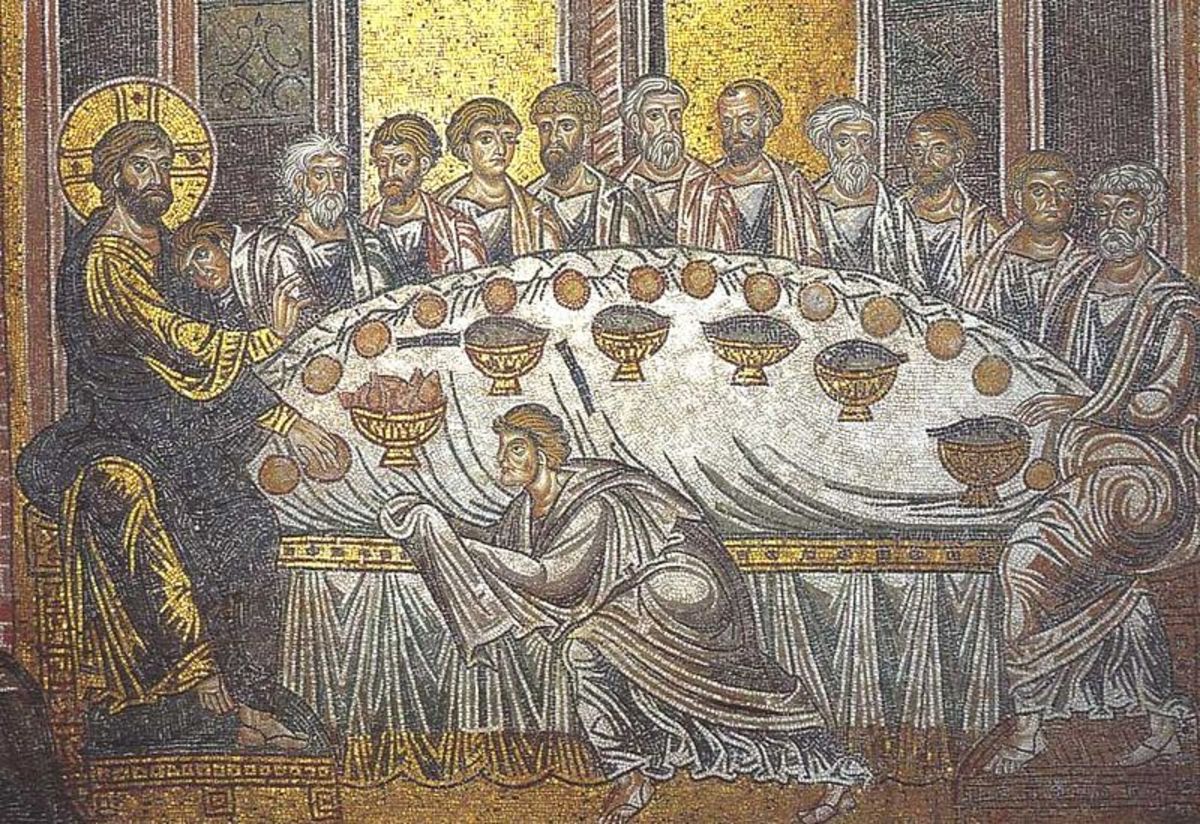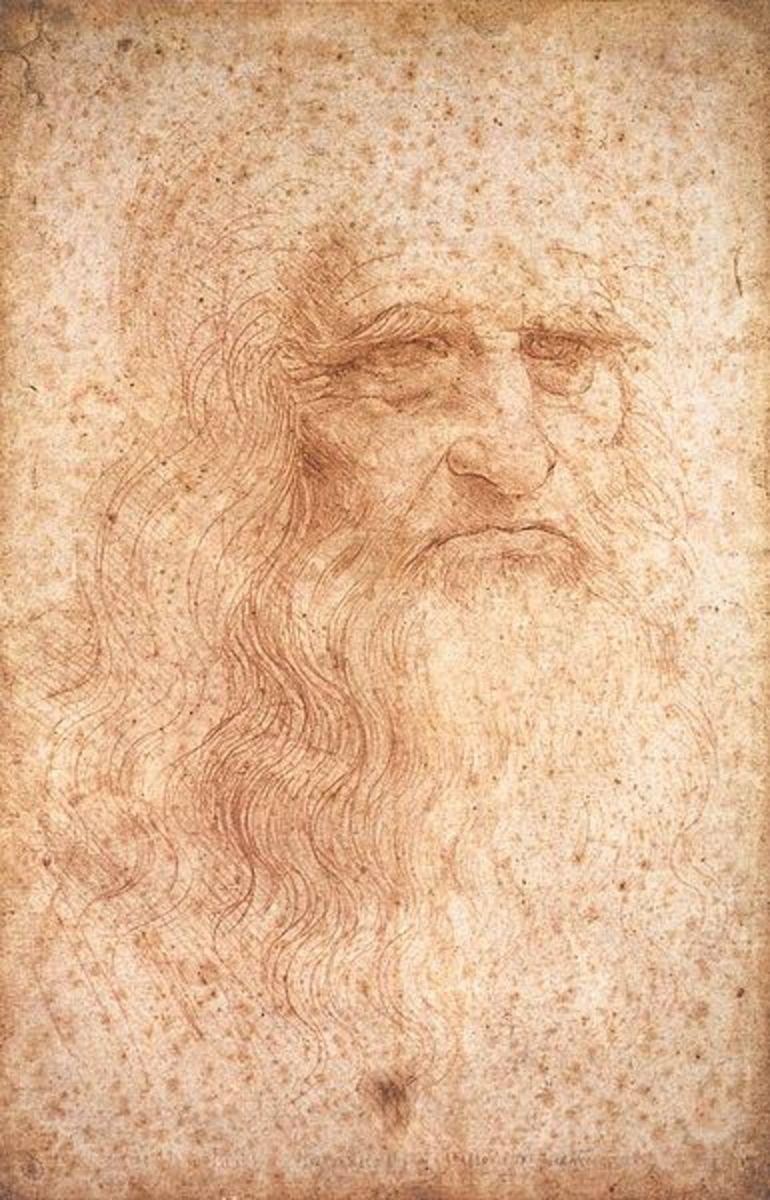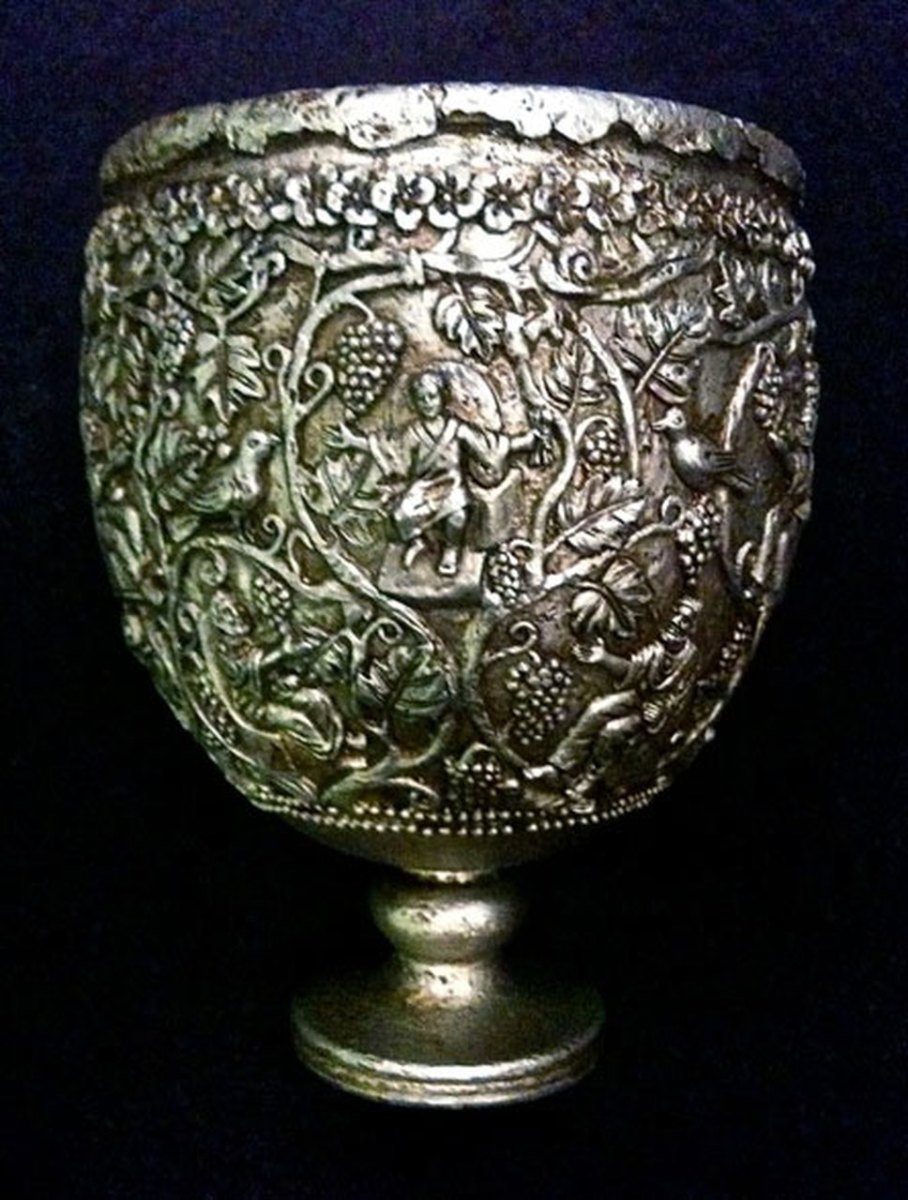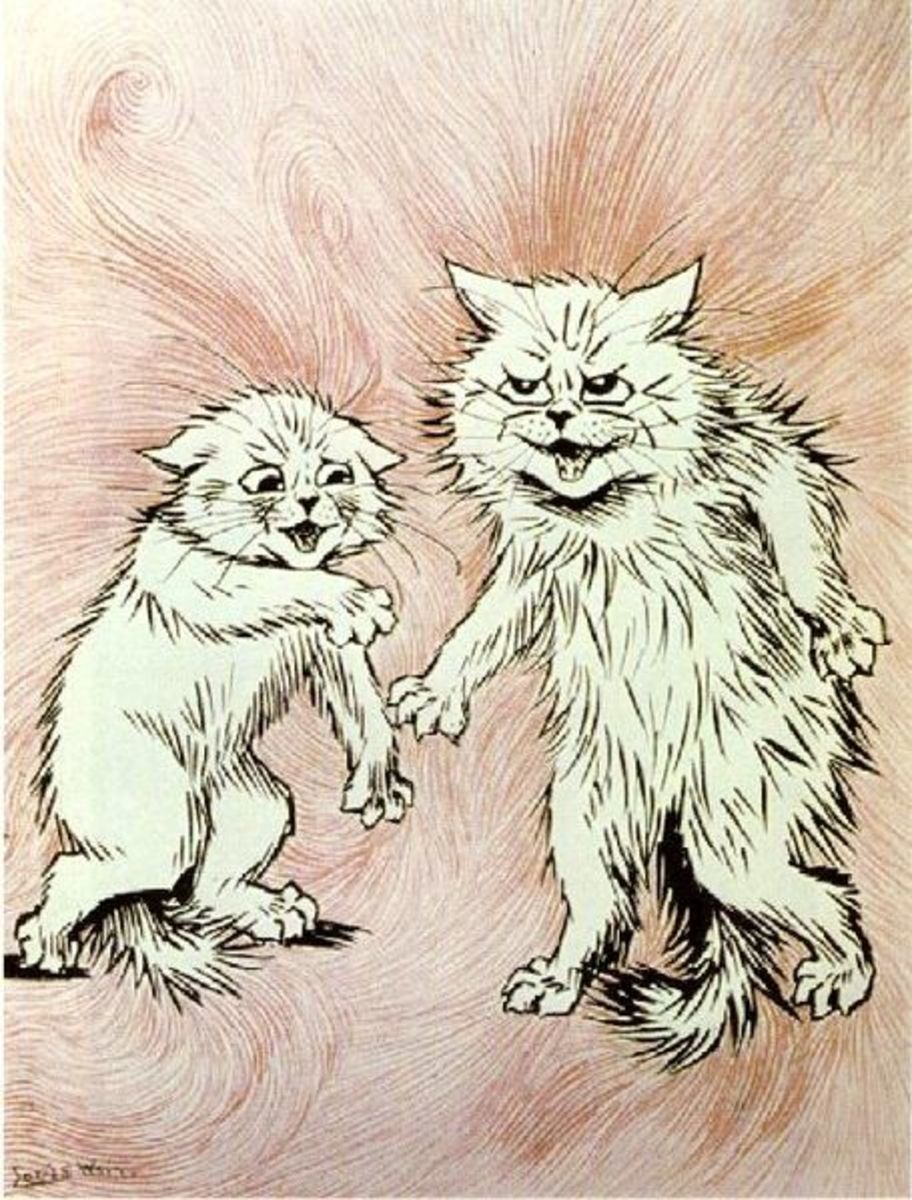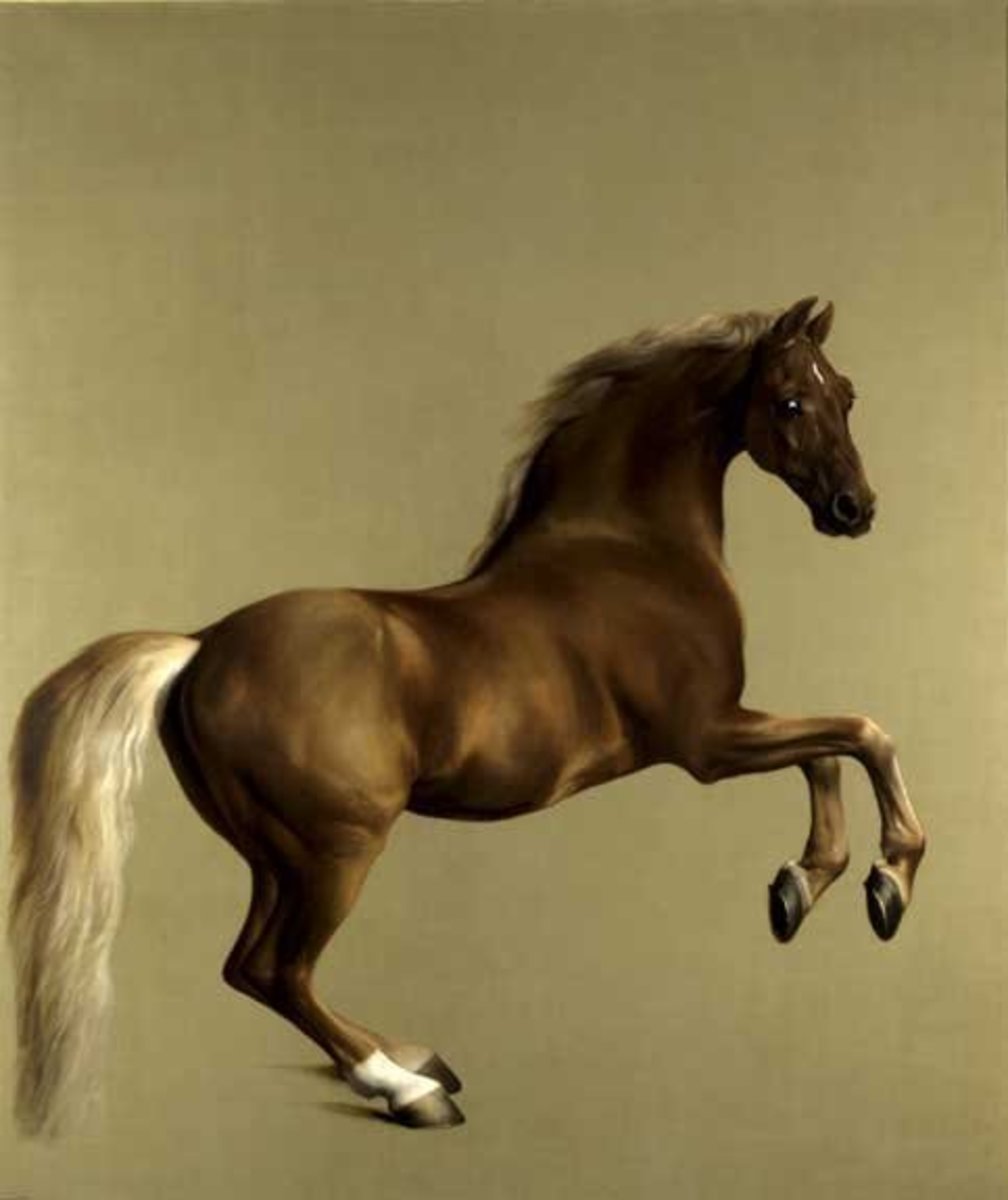The High Renaissance: Rome and Florence vs. Venice
Last Supper
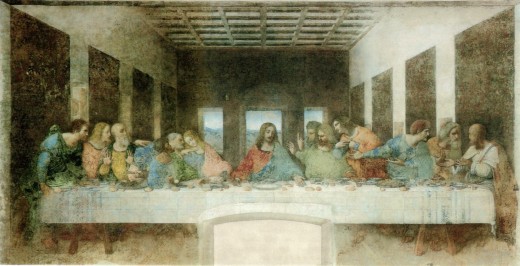
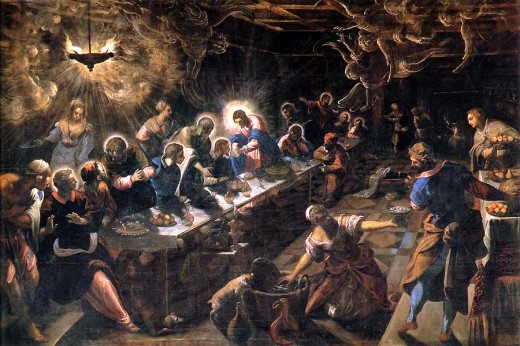
Last Supper: Da Vinci vs. Tintoretto
The well-known painting Last Supper in the refectory of Santa Maria delle Grazie in Milan, created by Leonardo da Vinci from 1495-1498 will be compared and contrasted with Last Supper by Tintoretto in 1594, created for the interior of Andrea Palladio’s church of San Giorgio Maggiore in Venice. The areas of comparison include artist’s personal reflection, style, and the religious impact of each piece.
Da Vinci focuses the entirety of the Last Supper on a singular particular crucial moment where Christ explains to his disciples “One of you is about to betray me” (Matthew 26:21). Christ is in the center, isolated and calm, surrounded by his twelve disciples, whose body language and facial expressions portray intense excitement, disbelief and distrust. Da Vinci’s composition organizes the Son of God as the focal point in the painting with all perspective lines converging toward his head. Leonardo enhances the psychological focus and cause of the action by making it the perspective focal point as well as the physical center of the painting. He also depicts the disciples in four groups of three, leaving Christ solo. The disciples at the ends of the table are quieter as if to contain the emotional energy towards the center, where the presence of Christ both intensifies and stops the turmoil.
Stylistically, Leonardo attempts to represent three dimensional characters on a two dimensional surface using perspective. The effect is lost to a small degree with the deterioration of the painting. Leonardo experimented with his materials with the disastrous result of the painting’s decline not long after its completion. The colors are dull, due to his mixture of paint, and aging or fading from the plaster walls with the paint entirely nonexistent in some places.
Da Vinci tries to accurately and realistically depict the reactions of the disciples to Christ’s news of betrayal. Leonardo completed successful preparatory studies of the biblical scene to accurately depict the disciples in their personal roles. By applying his extensive knowledge about the discernable world, Leonardo da Vinci painted a pictorial representation of a religious scene that was psychologically complex and compelling.
Tintoretto’s Last Supper does not focus on one specific defining moment but rather the dining experience as a whole. Christ is simply among his disciples instead of centered between them. Christ and eleven of his disciples have illuminated heads and assuming all twelve disciples are present, we can deduce that Tintoretto left off Judas’ halo. This version also incorporates other followers not of the original twelve feasting with Christ on the day before his crucifixion. Transparent angels also gather to witness this important display of God’s devotion to his people. The hierarchy portrayed in the painting of animals to human beings to angels represents the progression of the material to the spiritual. The composition does not have Christ as the focus point; he is above and beyond the perspective lines that move diagonally away from the surface of the picture. This creates disconcerting effects of unending depth and motion.
Stylistically, Tintoretto uses Mannerism, a style characterized by being stylish, cultured and elegant. An important feature associated with Mannerism is artifice, the sense that the art is not natural. Leonardo chose to conceal that artifice by using devices like perspective and shading to give their art the appearance of being natural. Mannerist artists, such as Tintoretto were less inclined to disguise this unnatural form. Mannerism is revealed in this painting in the imbalanced compositions, and unusual visual and conceptual complexities.
The viewer locates Christ due to his flaring light, a beacon in the surrounding darkness. The artist uses the contrast between light and darkness in the color scheme, focusing on the darker aspect in almost all of the painting except where the light source, Christ, and the angels are concerned. Christ’s halo is brighter than any of his twelve disciples and even the light source, thus giving the painting a religious meaning superior to the visual appeal.
Villa Chigi
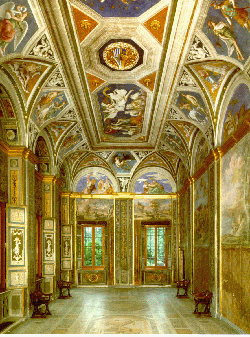
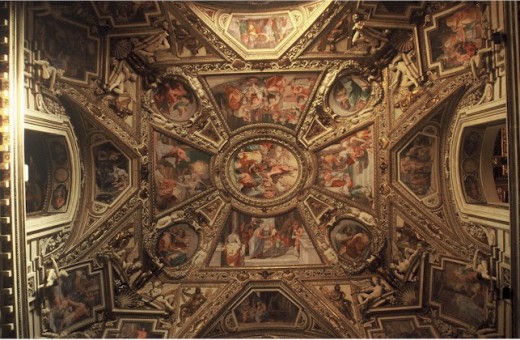
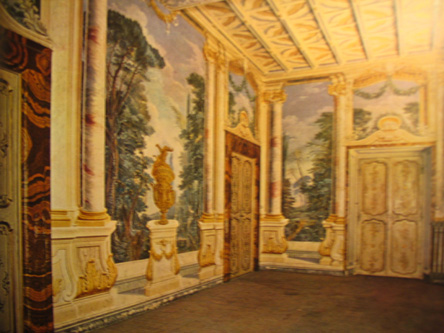

Villa Barbaro
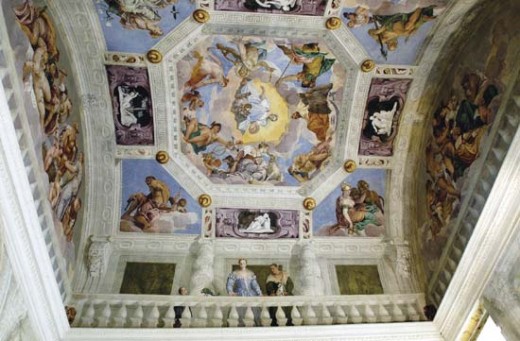
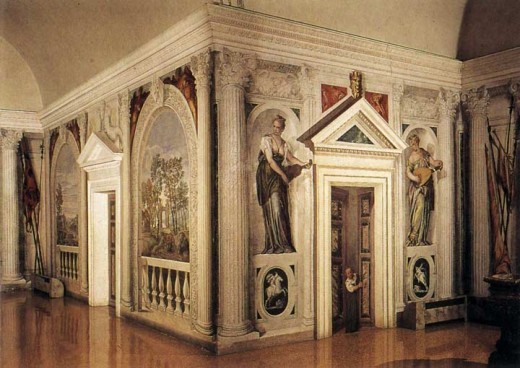
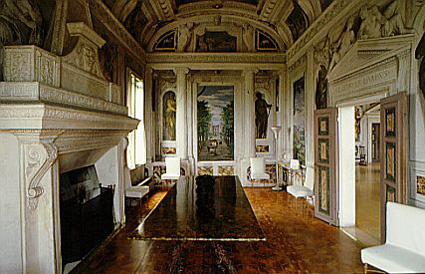
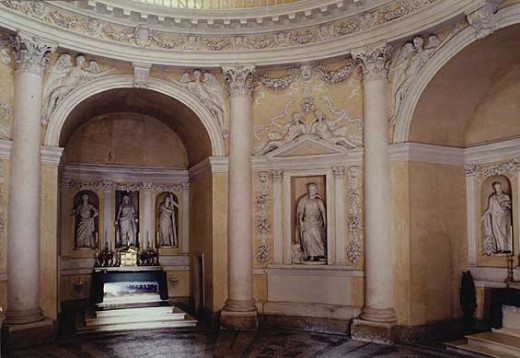
Villa Chigi vs. Villa Barbaro
Villa Chigi (now known as Villa Farnesina) in Rome, holds several paintings by Raphael Sanzio, commissioned by Agostino Chigi in the 16th-century will be compared and contrasted with Villa Barbaro which contains paintings by Paolo Veronese from slightly before 1560s to the early 1560s, at the request of Daniele Barbaro. The areas of comparison include political content, philosophical statement of the artist, and the artist’s personal reflection of each piece.
Raphael was commissioned to decorate the villa of one of the richest men in Europe, Agostino Chigi. His paintings were on two ceilings of canopies with which to protect the guests of the villa from the weather. Gods of antiquity dined with one another, overlooking the guests of the villa dining below. Mercury, the god of money presided over the banquet giving the pleasures of the flesh higher status. Raphael portrayed the power and wealth of the Chigi family and honors them by having them dine in the presence of ancient gods and goddesses. Having the god of money presiding over the dinner further acknowledges the Chigi family’s wealth and status in the republic’s society. These numerous grandiose presentations of Rome masked the declining papal authority in religious, military, and political aspects of society. By placing higher status on the pleasures of the flesh, Raphael incorporates his own tendency for love affairs into the setting and feel of the painting.
Daniele Barbaro personified the union of Venetian reality and Venetian spiritual. He was an ordained churchman and a nobleman, a farmer and a classical scholar. He translated a treatise of ancient architecture and gave those ideas form in his villa, Villa Barbaro on the Venetian mainland. Paolo Veronese gave harmonious visual expression to Barbaro’s values of an ancient villa. Veronese went one step further than Raphael in portraying the power, wealth, and honor of the Barbaro family. Not only did the classical gods, seasons, and elements watch over the Barbaro family, they all lived and existed on the same level. The paintings containing these ancient figures were interspersed with actual portraits of the Barbaro family. Veronese depiction of landscapes held typical characteristics of a picturesque ancient villa but he also enhanced it by including Barbaro lands, which continues to add to their elevated status in society. His landscapes of antiquity were invented based on descriptions from ancient Roman writers with current influence and displayed his concept of microcosmic reflection of macrocosmic order.

